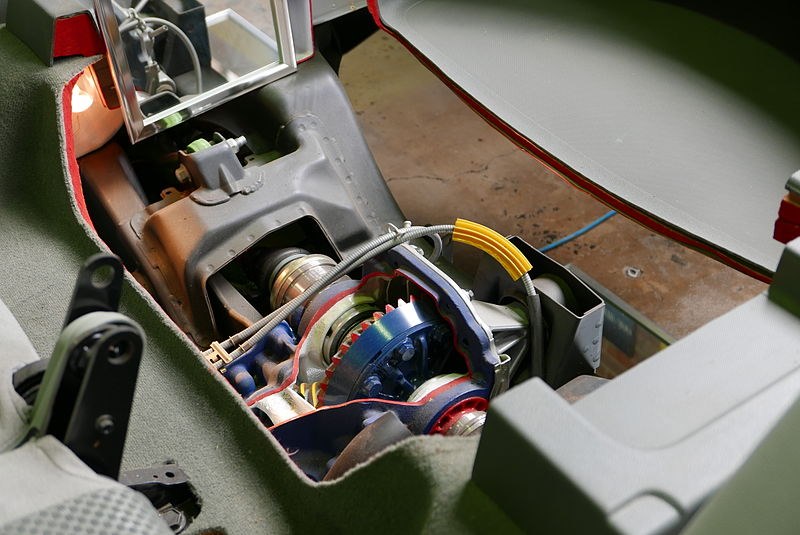About the driveshaft:
The driveshaft is a large, cylinder-shaped shaft which transmits torque and rotational energy between the engine and wheels. It rotates at high speeds which then turns a geat to rotate the wheels.
In order for a driveshaft to work correctly, it must be carefully weighted to ensure energy is distributed correctly. Damage to the driveshaft can offset this, causing uneven operation. For this reason, driveshaft damage can lead to noticeable symptoms and changes in the operation of your vehicle.
The driveshaft connects to the wheels via two Constant Velocity (CV) Joints. These allow for flexibility without bending or snapping the shaft. Over time, these joints can become worn, causing noticeable vibrations and other problems with the driveshaft.
Learn more about how the driveshaft works
Is it safe to drive with a faulty driveshaft?
A faulty or damage driveshaft can create unsafe driving conditions. For this reason, driveshaft damage can lead to your car failing its Warrant of Fitness (WOF). A damaged driveshaft can severely affect your car’s ability to turn, limiting the control you have. It can also cause vibration and shuddering while you drive.
For these reasons, we recommend that you keep driving to a minimum if the driveshaft is damaged.
Symptoms of driveshaft problems:
- Vibrations – One of the earliest symptoms associated with a damaged driveshaft is strong vibrations coming from under the vehicle. These vibrations may increase with acceleration. Vibrations indicate that the driveshaft is either loose or incorrectly balanced.
- Reduced acceleration – A damaged driveshaft can cause your car to shudder when you attempt to accelerate.
- Difficulty turning – A faulty driveshaft can affect the turning ability of your car’s wheels. Turns may take longer to complete, or the wheels may not turn at all.
- Increased wear of other parts – Due to excess movement in the driveshaft, other drivetrain components will wear at an accelerated rate.
Causes of a broken driveshaft:
A driveshaft can become broken for several reasons, including:
- Wear and tear: Over time, the driveshaft can become worn due to friction and vibrations, leading to metal fatigue and eventual failure.
- Improper alignment: If the driveshaft is not properly aligned with the transmission and differential, it can cause excessive wear and lead to failure.
- Impact damage: The driveshaft can become damaged from impact, such as from hitting a pothole or curb.
- Corrosion: The driveshaft can become corroded due to exposure to moisture and road salts, leading to metal fatigue and eventual failure.
Driveshaft New Parts, Replacement & Servicing in Hamilton
Have you experienced damage to your car’s driveshaft? If so, we can help! At Grimmer Motors, one of our skilled mechanics can examine, service and replace your car’s driveshaft components such as universal and CV joints. We can also organise a more complex driveshaft replacement. If you’ve failed your Warrant of Fitness due to a driveshaft issue, we can fix the problem, making your car legal to drive again.
For driveshaft replacement and services in Hamilton, contact Grimmer Motors today!


